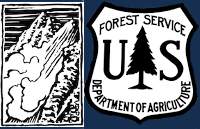Photos
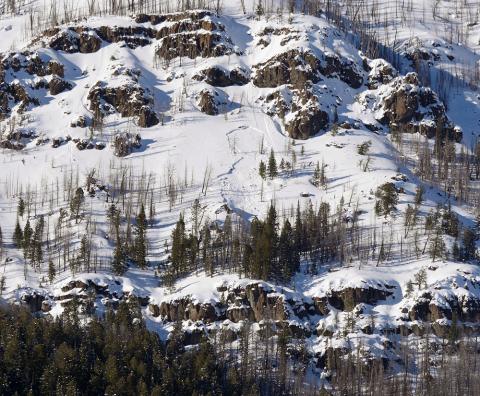
|
Cooke City, 2017-01-17 A small slab avalanche observed (Monday) in YNP. S, SE aspect on Druid Peak, around 8,300'. Photo: B. Fredlund |
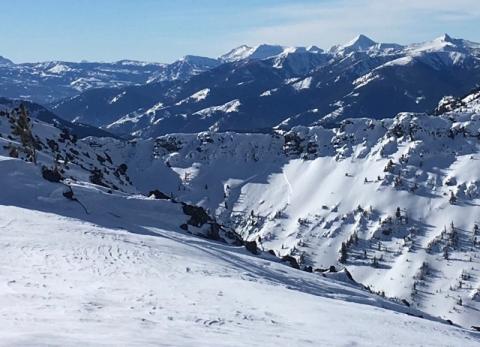
|
Northern Gallatin, 2017-01-17 From an email: Avalanche observed, Jan 16, 2017. East facing slope. Start zone at approx 9600 feet. Ridgeline directly west/southwest of Divide Peak, Gallatin Range. Photo taken from Divide Peak. Photo: G. Stephens |
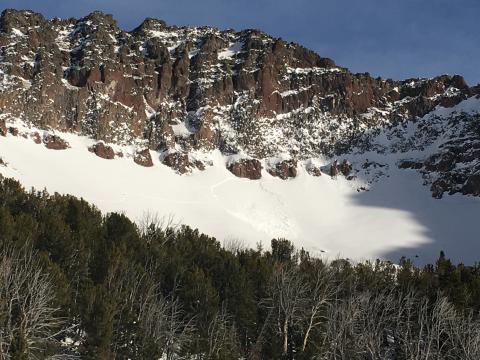
|
Northern Gallatin, 2017-01-17 Goat triggered avalanche on a west aspect in the northern Gallatin Range up Hyalite. The goat was ok, although shaken up. It doesn't look like he had a partner. Photo: J. Johnson |
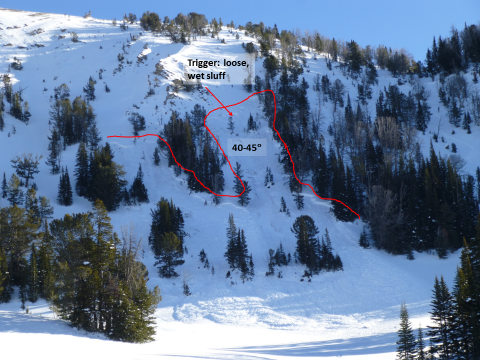
|
Northern Madison, 2017-01-16 This natural avalanche was likely triggered from a wet loose avalanche that released from the rocks. The snowpack was thin, the slope steep, and the weak layer was large grained depth hoar. The slope was SW facing and the crown was at 9200 feet. Photo: GNFAC |
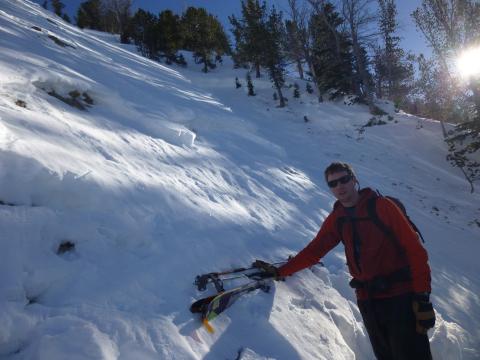
|
Northern Madison, 2017-01-16 Alex Marienthal stands at the crown of the natural avalanche in Beehive Basin. The slope was thin, steep and weak. Photo: GNFAC |
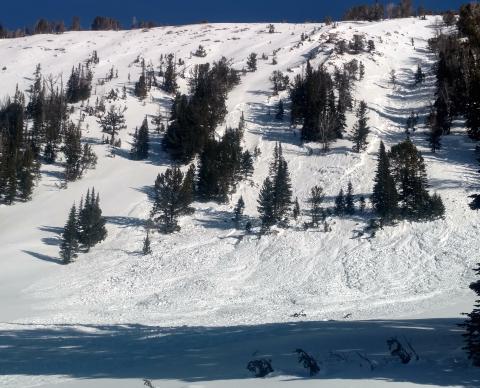
|
Northern Madison, 2017-01-15 Avalanche observed in Beehive Basin on January 15. SW aspect around 9200'. Broke on a layer of facets buried below recent storm snow. Photo: C. Bieniek |
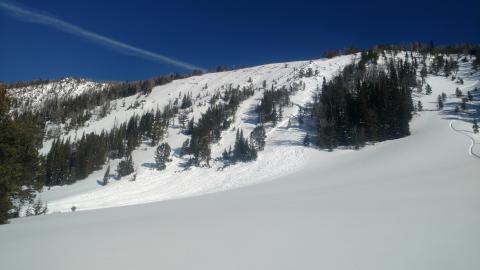
|
Northern Madison, 2017-01-15 This avalanche was observed in Beehive Basin on January 15. It broke on weak facets buried below the recent strom snow. Photo: C. Bieniek |
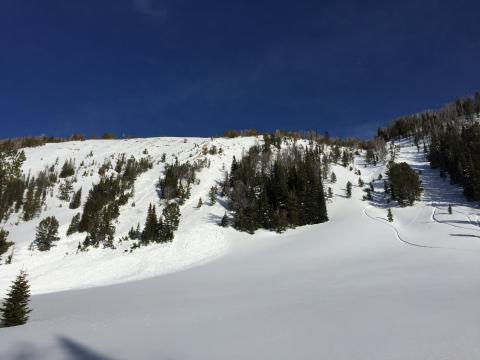
|
Northern Madison, 2017-01-15 Avalanche observed on January 15 in Beehive Basin. Photo: P. Ramos |
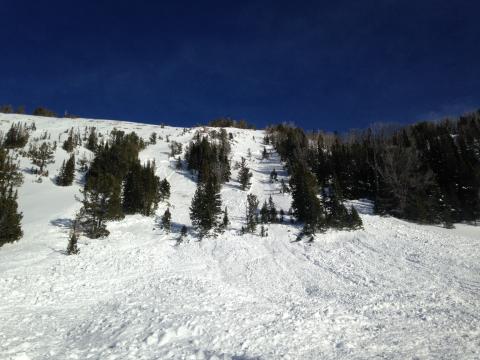
|
Northern Madison, 2017-01-15 This avalanche was observed on Sunday January 15th by multiple parties. It broke on weak facets buried below recent storm snow, and appears to have also broke deeper into facets near the ground. SW aspect around 9200'. Photo: S. Hennessey |
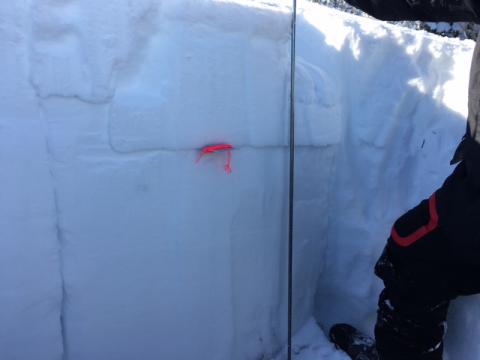
|
Lionhead Range, 2017-01-15 This stability test broke and propagated (ECTP 14) on a layer of facets below the recent storm snow. Avalanches are possible to trigger on this layer. Photo: J. Norlander |
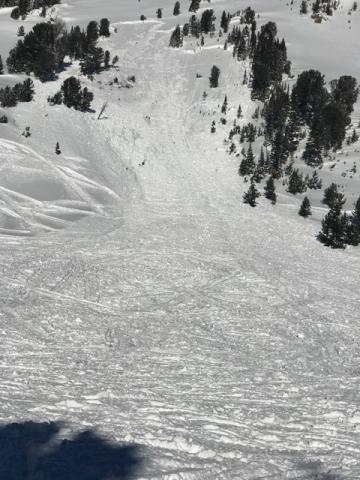
|
Cooke City, 2017-01-15 This slide on the south end of Sheep Mtn. near Cooke City was lilkely snowmobile triggered. It likely failed on a layer of facets below the recent storm snow. Photo: B. Whittle |

|
Southern Madison, 2017-01-13 A thin weak layer of facets that formed during cold temperatures are buried by last week's 2+ feet of snowfall. We found unstable test results in this pit, and the poor structure makes avalanches possible to trigger on this layer. Photo: GNFAC |

|
Cooke City, 2017-01-13 This natural slide occurred on a S-SE facing slope up Sheep Creek outside of Cooke City. The slide appears to only involve the new snow and likley failed on a layer of near surface facets buried 2-3 feet deep. Photo B. Fredlund |
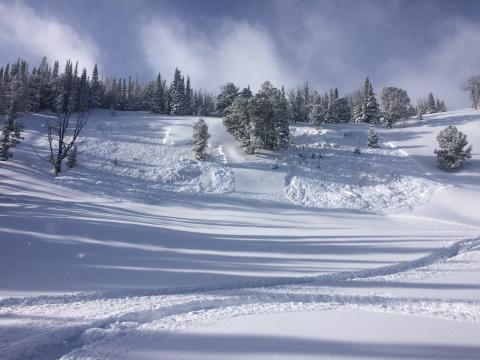
|
Lionhead Range, 2017-01-13 A snowmobiler in the Lionhead area near West Yellowstone remotely triggered these two small slides. It appears they failed on a layer of facets 1-2 feet deep. This layer formed during the cold weather in the early part of January. Photo T. Campbell |

|
Bridger Range, 2017-01-12 King and Queen of the Ridge: A Hike and Ski/Ride-a-Thon fundraising event to support the Friends of the Gallatin National Forest Avalanche Center. Register with Bridger Bowl HERE, make pledges HERE. |
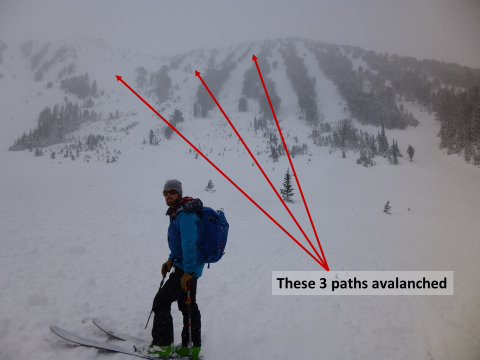
|
Cooke City, 2017-01-11 Cooke City near Lulu Pass: Standing on the toe of the debris with the three slide paths behind. Photo: GNFAC |
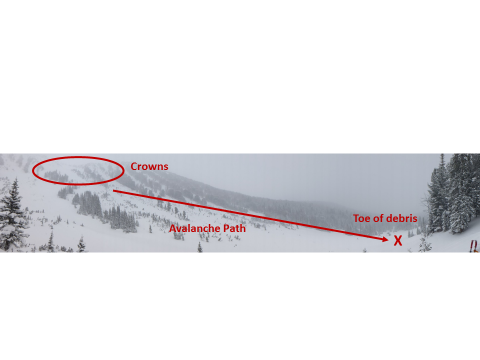
|
Cooke City, 2017-01-11 A panoramic shot showing the avalanche paths and toe of the debris. The runout angle was 25 degrees, a low angle, which means the avalanche ran very far. Photo: GNFAC |
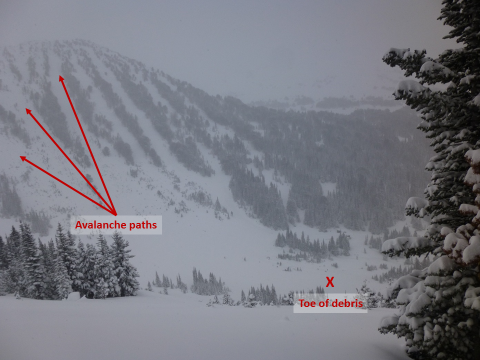
|
Cooke City, 2017-01-11 This natural avalanche ran in the early morning hours. It likely failed on a layer of facets under the 4 feet of new snow. Wind-loading was a contributing factor. Photo: GNFAC |
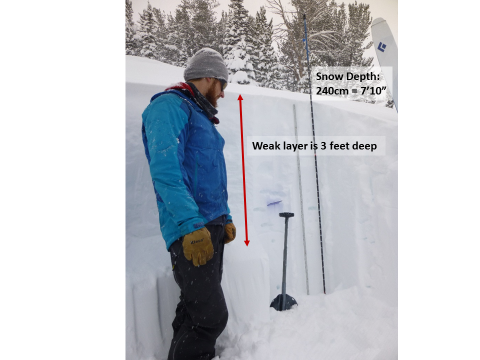
|
Cooke City, 2017-01-11 Cooke City: The weakest layer in the snowpack is a layer of small-grained facets 3-4 feet deep. Natural avalanches are breaking on this layer. We got collapsing and cracking as we toured. Photo: GNFAC |

|
Northern Madison, 2017-01-07 Photo: GNFAC |
